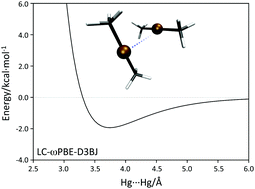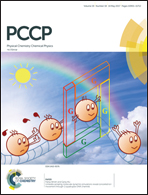Mercurophilic interactions: a theoretical study on the importance of ligands†
Abstract
In this work, a theoretical analysis of intermolecular Hg⋯Hg contacts in the presence of different ligands is presented. A survey of structural databases to explore the geometrical preferences among experimental structures presenting short Hg(II)⋯Hg(II) contacts reveals the main interaction topologies depending on the nature of the ligand. A benchmark study of several dispersion corrected-density functional methods is carried out to determine the optimal computational methodology for the theoretical study of such interaction. This methodology is later used in the study of several dimers of dicoordinated mercury compounds [HgX2]2 (X = Cl, Br, I, CN, CH3, CF3, SiH3, SiMe3) as well as to evaluate the stability of different interacting topologies in such dimers. It is found that, whenever possible, two mercury-containing molecules will preferentially join through intermolecular Hg⋯X donor–acceptor interactions and only ligands devoid of atoms with lone pairs available for such interactions can form dimers attached predominantly via mercurophilic interactions.



 Please wait while we load your content...
Please wait while we load your content...